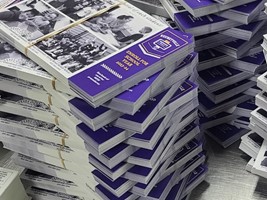Choosing the proper printing technique is crucial for achieving the desired results in any print project. From business cards to packaging, the printing method can significantly affect the quality, cost, and turnaround time of the final product.
A Quick Overview of Printing Techniques
Here, we explore various printing techniques and their best uses.
Offset Printing
Definition and Process: Offset printing is a traditional method in which an inked image is transferred (or "offset") from a plate to a rubber blanket and then to the printing surface. This technique uses the CMYK (Cyan, Magenta, Yellow, Black) color model and is ideal for high-volume print runs.
Uses: Offset printing is perfect for producing high-quality and consistent results on large print runs. It is commonly used for printing books, magazines, newspapers, brochures, and stationery.
Digital Printing
Definition and Process: Digital printing involves directly transferring a digital image using high-speed inkjet or laser printers. It eliminates the need for printing plates, making it cost-effective for short runs.
Uses: This method offers quick turnaround times for low to medium-volume printing jobs. It's ideal for business cards, flyers, posters, and personalized marketing materials.
Screen Printing
Definition and Process: Screen printing, or silk screening, uses a mesh screen to transfer ink onto a material, except in areas made impermeable to the ink by a blocking stencil. It allows for vibrant colors and durable prints.
Uses: You will see screen printing widely used for textiles, such as t-shirts, bags, and other promotional items. It is also used for posters, stickers, and signage.
Flexography
Definition and Process: Flexography uses flexible relief plates to print on a variety of substrates, including plastic, metallic films, and paper. It is a high-speed process suitable for large print runs.
Uses: Printers commonly use flexographic printing for packaging, including food packaging, labels, tape, and gift wrap. This technique also works for printing on non-porous materials required for various industrial applications.
Gravure Printing
Definition and Process: Gravure printing involves engraving the image onto a cylinder, which is then used to transfer ink onto the material. This method is known for its high-quality image reproduction and consistency.
Uses: Printers typically use gravure printing for high-volume printing tasks such as magazines, catalogs, packaging, and wallpaper.
Letterpress Printing
Definition and Process: Letterpress printing is a relief technique in which a printed plate's raised surface is inked and pressed onto the paper. This traditional method offers a distinctive, tactile quality.
Uses: This technique is frequently applied to customize high-quality stationery, wedding invitations, and business cards. It's appreciated for its ability to produce crisp, clean lines and a luxurious feel.
Understanding the various printing techniques and their uses can significantly enhance the outcome of your print projects. Whether you need high-volume brochures, custom t-shirts, or elegant wedding invitations, contact us today. Let's discuss the perfect printing technique to bring your vision to life.




